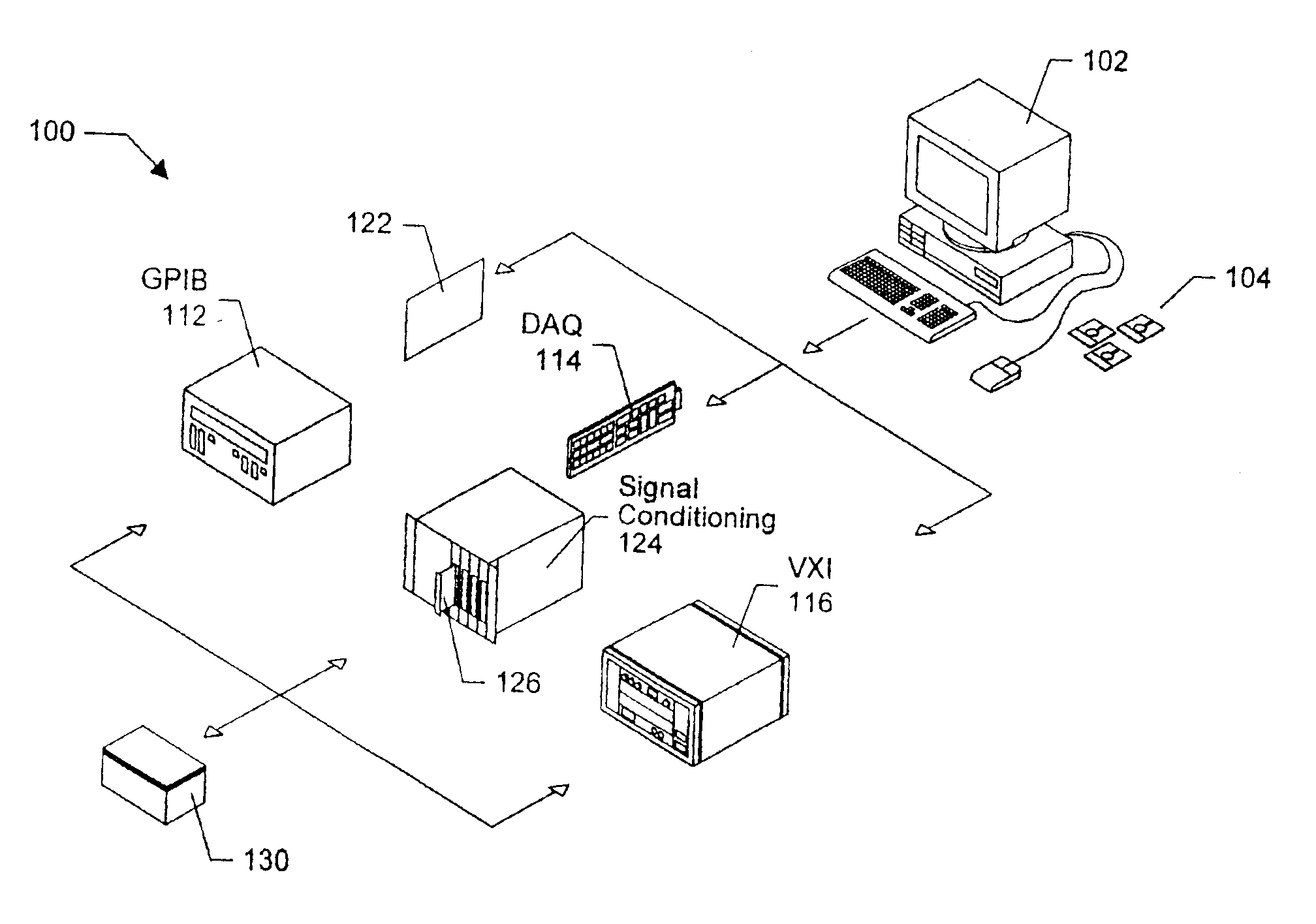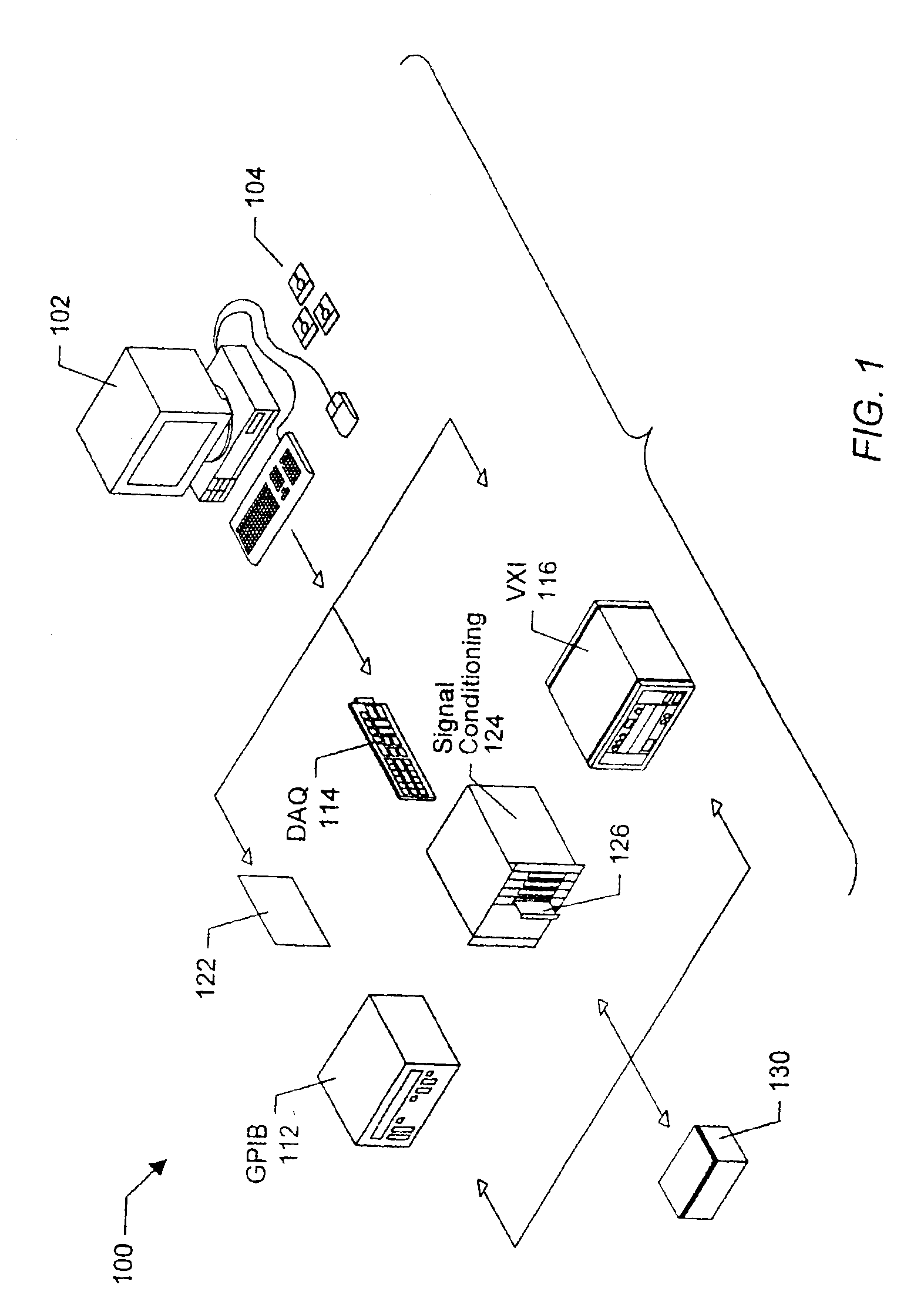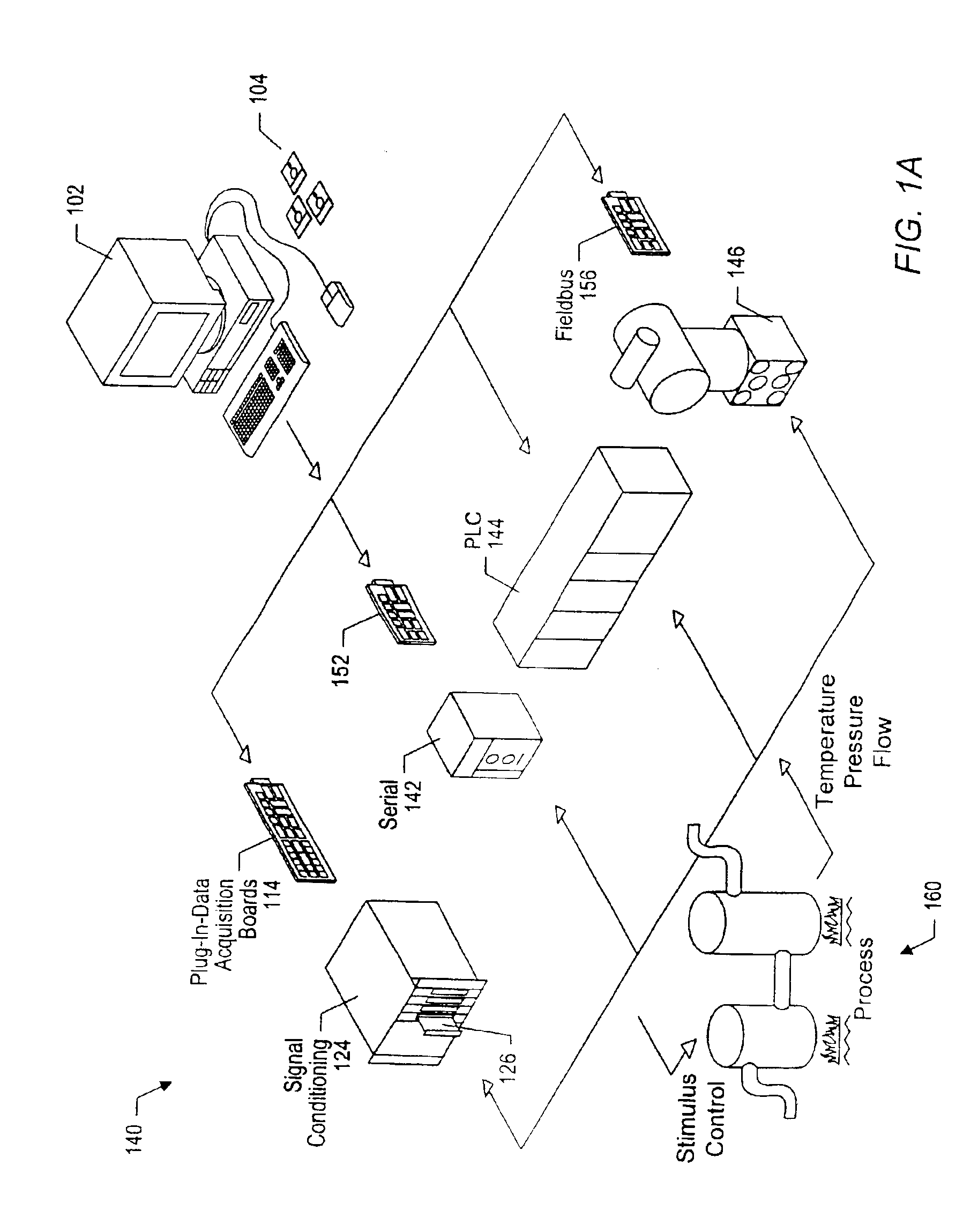Specifying and targeting portions of a graphical program for execution by multiple targets
a graphical program and target technology, applied in the field of graphical programming, can solve the problems of complex task of programming a computer system to model a process, limiting the achievement of optimal utilization of the computer system, and not fully proficient in techniques
- Summary
- Abstract
- Description
- Claims
- Application Information
AI Technical Summary
Benefits of technology
Problems solved by technology
Method used
Image
Examples
Embodiment Construction
Incorporation by Reference
[0050]The following U.S. patents and patent applications are hereby incorporated by reference in their entirety as though fully and completely set forth herein.
[0051]U.S. Pat. No. 4,901,221 titled “Graphical System for Modeling a Process and Associated Method,” issued on Feb. 13, 1990.
[0052]U.S. Pat. No. 4,914,568 titled “Graphical System for Modeling a Process and Associated Method,” issued on Apr. 3, 1990.
[0053]U.S. Pat. No. 5,481,741 titled “Method and Apparatus for Providing Attribute Nodes in a Graphical Data Flow Environment”.
[0054]U.S. patent application Ser. No. 08 / 292,091 filed Aug. 17, 1994, titled “Method and Apparatus for Providing Improved Type Compatibility and Data Structure Organization in a Graphical Data Flow Diagram”.
[0055]U.S. Pat. No. 5,475,851 titled “Method and Apparatus for Improved Local and Global Variable Capabilities in a Graphical Data Flow Program”.
[0056]U.S. Pat. No. 5,497,500 titled “Method and Apparatus for More Efficient Fu...
PUM
 Login to View More
Login to View More Abstract
Description
Claims
Application Information
 Login to View More
Login to View More - R&D
- Intellectual Property
- Life Sciences
- Materials
- Tech Scout
- Unparalleled Data Quality
- Higher Quality Content
- 60% Fewer Hallucinations
Browse by: Latest US Patents, China's latest patents, Technical Efficacy Thesaurus, Application Domain, Technology Topic, Popular Technical Reports.
© 2025 PatSnap. All rights reserved.Legal|Privacy policy|Modern Slavery Act Transparency Statement|Sitemap|About US| Contact US: help@patsnap.com



